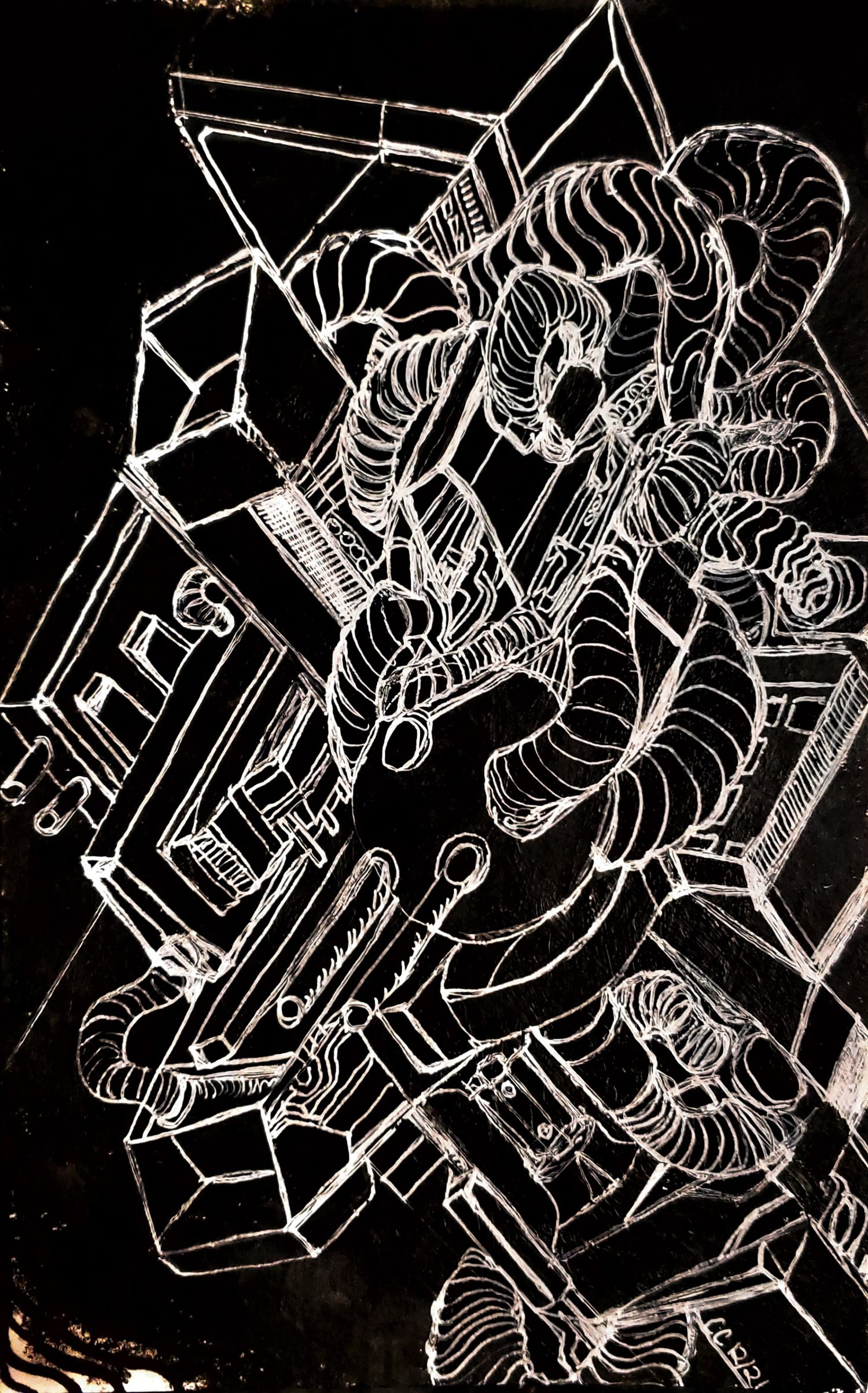Dualistic Design: Yin & Yang & Yeats
First blog post. Cue confetti.
I recently finished a Coursera course on learning to learn. It taught me how to teach myself, and it was helpful in helping me stop procrastinating (mainly on a blog such as this).
Dropping the cutesy double-wordings above, I did find something more interesting in this course than simply the Pomodoro technique, chunking, or how to build better brain muscles. In an interview with Barbara Oakley, Dr. Robert Bilder brought up an idea from William Butler Yeats that captured my imagination. It is a graphical representation of the dualistic ideas found in W. B’s poetry, as shown in the first lines of his ever-quoted, apocalyptic poem “The Second Coming”:
Turning and turning in the widening gyre
The falcon cannot hear the falconer;
Things fall apart; the centre cannot hold
I won’t be talking about the poem—Chinua Achebe, Stephen King, and scores more authors have done their worst propping up poetry’s shambling corpse in modern culture. I’m here to talk about Yeats and his probably-drug-induced visions. Specifically, his gyres, or cones, or whatever came out of that swimming, Nobel-prize-winning head that made this gem of a design:
Intersecting cones formed from a “spiraling gyre”. Read this for more info.
To Yeats, these cones were the culmination of many ideas, but most interestingly to me, they represent the passage of spirit into body and vice-versa (I may be missing some finer points—I’m mostly here for the geometry anyways).
Apart from its hair-rippingly difficult conceptual framework behind it, the design felt so modern to me, as if this hourglass should be on the wall of every tattoo-to-go joint, yet this was my first time seeing it. Maybe if I was in more occult circles, I wouldn’t be so surprised, but I’m betting it’s also unknown to you too, dear reader.
Stanford describes Dualism as “two fundamental kinds or categories of things or principles.” This typically applies to the mind-body duality that has weaseled its way into everything ever since Plato and his eternal Forms, but I am not concerned with him nor his philosophy here. Yes, my perfect soul is entrapped within this very imperfect body Plato…thanks for reminding me.
Anyways, Yeats’ cones are an example of equal opposites or dualism, and I feel dualism is a fantastic starting point from a design perspective; in it comes a prepacked balance, contrast, and unity. Here are two radically different and famous examples of dualistic design:
Now THESE are designs you could pick off the wall at your choice of tattooist’s parlor.
Putting their iconic status aside though, both show the immense power of dualism in design, in very different ways. The knot shows a linear dualism, where the ribbon weaves from top to bottom to top until it arrives at its starting point, illustrating the journey from life to death to rebirth. The Yin-Yang symbol I have no need to describe because, well, it’s so good that it explains itself.
I love them both, as do many others, I think because they are philosophy as design, communicating so much with so little.
I write about Yeats and his gyres because they inspire me. The design is elegant, interesting, sleek, and full of ideas. Finding them in a Coursera class shows me that the creative process is as much about recycling as it is about discovery. The design itself describes how the start of something, like this blog, is part of a larger process that I cannot yet explain. I am on some widening journey, turning and turning, while on the inside I am getting closer and closer to some central notion.
I guess what I’m trying to say is that, if you see these cones as tattoos soon, I called it first.



